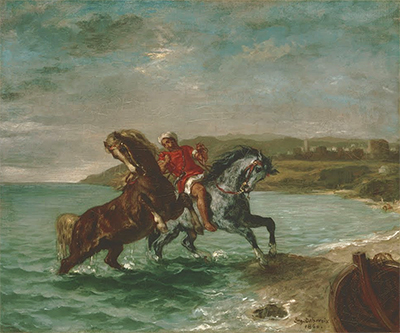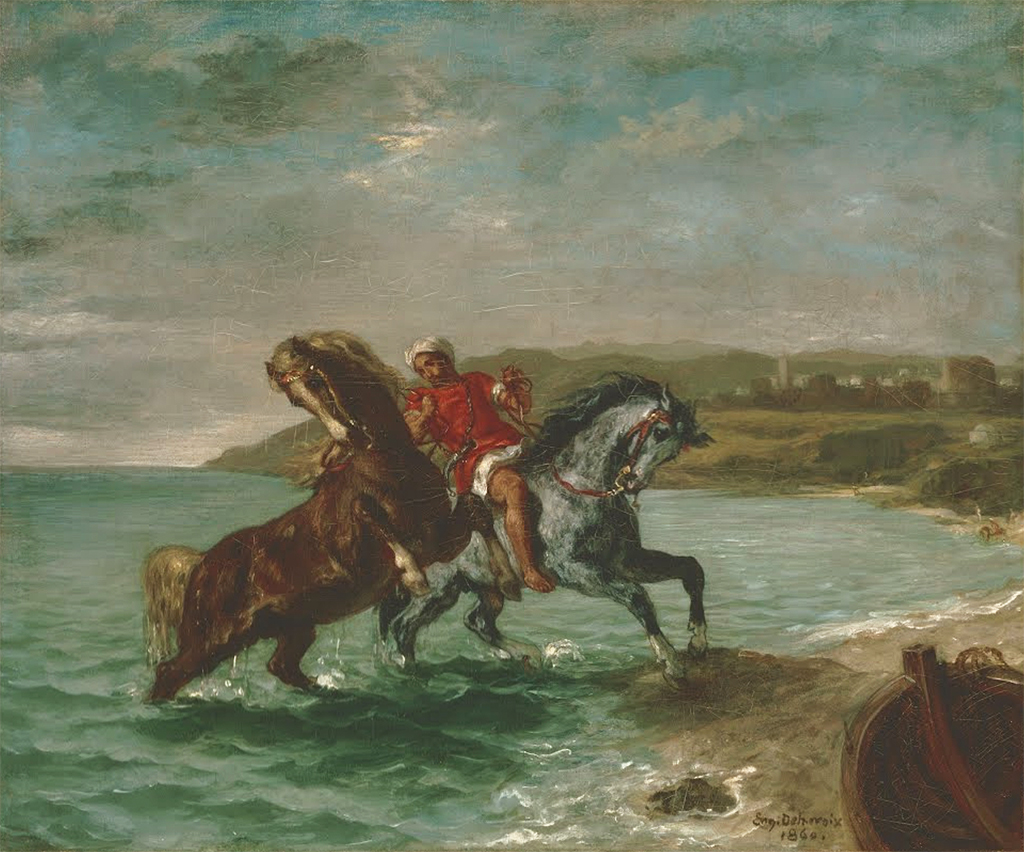This memorable scene from Eugene Delacroix was completed in 1860, making it one of his last few works, with his death following just three years later. by this point he had truly mastered horse portraits after many successful depictions dating back decades.
The composition features several items which are entirely consistent with the career of Delacroix, from the dramatic poses of two horses, to the bright red tones of the outfit worn by the central figure, to the small boat which appears in the bottom right corner. He also produced many backgrounds within his paintings similar to this, with beach scenes or rolling hills. Within Horses Leaving the Sea, there is also a small town in the far distance. Horses and animals more generally were an important feature of Romanticist art, with both literature and art appreciating the wildness of these creatures and attempting to recreate it within their written and visual output. Delacroix captured horses within many paintings, perhaps more than twenty in total and most of these are featured within this website. In order to achieve such accuracy he would have to have studied these creatures in considerable detail over many years.
Further research completed on this painting has unveiled the rider as being of Moroccan origin and the town behind him being that of Tangiers, which remains an important port city today. The artist was a huge fan of Islamic culture and travelled around North Africa looking for sources of inspiration. He particularly appreciated the architecture found here as well as the variation in customs as compared to his native France. Different populations were far less aware of each other during the 19th century and so paintings from the likes of Delacroix would help others to better understand exotic cultures. The artist also produced Arab Horses Fighting in a Stable in the same year and it is understood that the two were produced as a commissioned pair for the same patron. Without doubt, he can be considered one of the finest animal artists in history, and would place them within varied scenes with all manner of different influences and genres.
It is likely that this artwork was actually completed in France, based on sketches that the artist produced whilst travelling. This is how he worked for many of his North-African themed paintings, with around 100 produced in total. He was a part of the Orientalist movement in that regard, though his career as a whole is more generally aligned with the Romanticist movement because he also took on a number of other genres as well. The painting can now be found in the Phillips Collection in Washington DC, USA. It sits alongside some of the most famous paintings in art history, such as Luncheon of the Boating Party by Pierre-Auguste Renoir, Mont Sainte-Victoire by Paul Cezanne and also The Repentant St. Peter by Francisco de Goya. Delacroix would later comment about his work in this genre and reflect on how his approached changed over time.
"...I was not able to do anything passable in my African journey until the moment when I had sufficiently forgotten the small details so as to recall in my paintings only the striking and poetical aspects..."





